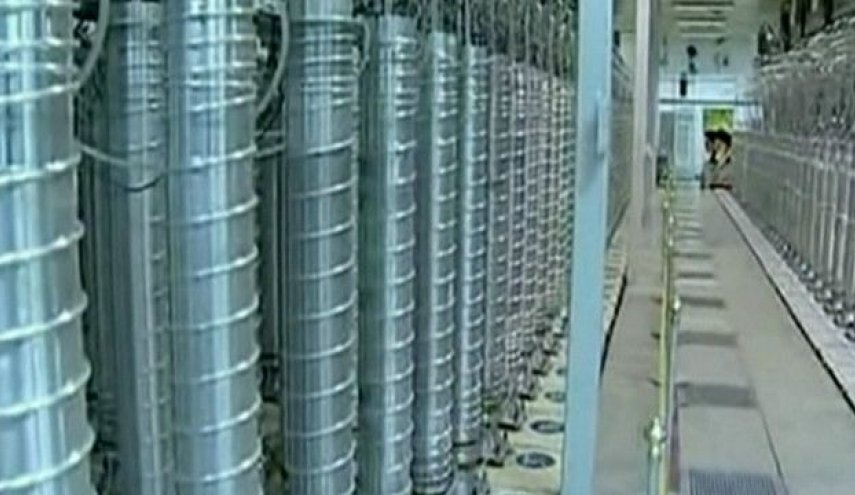60 percent enrichment at Fordow; Iran responds to IAEA

TEHRAN – In its first practical response to the recent resolution adopted by the UN nuclear watchdog’s Board of Governors, Iran started spinning more advanced centrifuges at a nuclear plant that has long been in the crosshairs of the West.
On Monday, Iranian Foreign Ministry spokesman Nasser Kanaani reacted to the recent resolution passed by the International Atomic Energy Agency’s Board of Governors and Iran’s response to it.
The resolution, put forth by the United States and the E3 countries – Germany, France and the UK -, demanded that Iran answer the questions raised by the IAEA regarding the alleged nuclear material found at three sites.
Despite Iran answering the questions and offering further cooperation with the UN nuclear watchdog, the U.S. and its European allies moved ahead with the resolution, which Kanaani said was tabled with “political aims.”
“It was put on the agenda of the US and the European trio, to mount pressures on the Islamic Republic of Iran,” said the spokesman, adding that the resolution was issued while Iran has had the most transparent peaceful nuclear program in the world, with regards to the number of the nuclear installations under the supervision of the IAEA worldwide, while Tehran has let the Agency conduct the highest number of inspections and verifications.
Describing the resolution as a “destructive and irrational move,” Kanaani said unfortunately instrumental use of international organizations against independent nations has turned into a norm in the foreign policy of the West.
The spokesman pointed out that the Islamic Republic will never give in to the pressures, reiterating Iran will continue its peaceful nuclear program proportional to its needs and in line with its rights and commitments under the international treaties to which it is a member state.
Kanaani then touched on Iran’s response to the resolution. “In response to the recent move by the US and the three European countries in approving the anti-Iran resolution, at the first stage Tehran has put a few measures on the agenda of the Atomic Energy Organization of Iran (AEOI) that were implemented on Sunday at the enrichment sites of Martyr Ahmadi Roshan (in Natanz) and Dr. Alimohammadi (in Fordow) with the IAEA inspectors in attendance,” he said in a statement.
He concluded, “Any time the western sides return to their commitments and abide by their obligations, and put an end to the political moves, the Islamic Republic of Iran will react proportionately, while pursuing its inalienable rights.”
Kanaani did not detail Iran’s retaliatory measures. But Mohammad Eslami, the head of the AEOI, revealed some of them.
Speaking to reporters on Tuesday, Eslami said, “Over the last days, we witnessed the adoption of a resolution against Iran, which was met with our reciprocal response in such a way that in recent days the production of UF6 uranium with a purity of 60 percent started at Fordow.”
According to a statement by the AEOI, Iran also installed a set of the more advanced IR6 centrifuges at the Natanz nuclear plant, a move that will further accelerate Iran’s uranium enrichment to the level of 60 percent.
In its first reaction to the Iranian move, the U.S. cast doubt over Iran boosting its uranium enrichment at the Fordow nuclear plant. U.S. Secretary of State Tony Blinken said during a trip to Qatar that he was unable to confirm reports of Iran’s nuclear move.
The Iranian move comes at a time when talks in Vienna over reviving the 2015 Iran nuclear deal, officially known as the Joint Comprehensive Plan of Action (JCPOA), remain at a standstill due to differences between Iran and the Western powers.
In an effort to break the ice in the talks, Iran presented new ideas over the past few weeks. But it’s unclear if the Iranian initiative would succeed in bringing a new atmosphere to the stalled talks.
It seems that Iran made its latest nuclear move after the U.S. and the E3 failed to take note of the proposed Iranian ideas. But Iran’s decision to ratchet up uranium enrichment at Fordow could break the ice as it presents the West with new nuclear realities that they can’t ignore.
With the latest nuclear move, Iran will enrich uranium up to 60 percent purity at Fordow for the first time. When it comes to Fordow, enrichment per se is meaningfully important not to mention 60 percent enrichment. Because under the terms of the JCPOA, Iran was not allowed to enrich uranium at Fordow at all. And the highest enrichment level Iran was allowed to reach was 3.67 percent, much below the current level of Iran’s enrichment.
Moreover, some say that Iran has started spinning the advanced IR6 centrifuges at Fordow, which makes the Iranian response even more important, given the pace at which this type of Iranian centrifuges enrich uranium.
Mehdi Mohammadi, an advisor to the speaker of the Iranian Parliament who is the mastermind behind many parliamentary nuclear bills, said the Iranian move will improve Tehran’s nuclear response to non-nuclear pressure by the U.S. and its allies.
“The beginning of uranium enrichment with the IR6 machines at Fordow will fundamentally improve the potential options of Iran’s nuclear response to the non-nuclear pressure of the U.S. and its allies,” Mohammadi said on Twitter.
The advisor did not specify examples of non-nuclear pressure. But he was probably referring to the role Iranian officials say the U.S. played in fomenting unrest across Iran in the wake of the death of Mahsa Amini.
